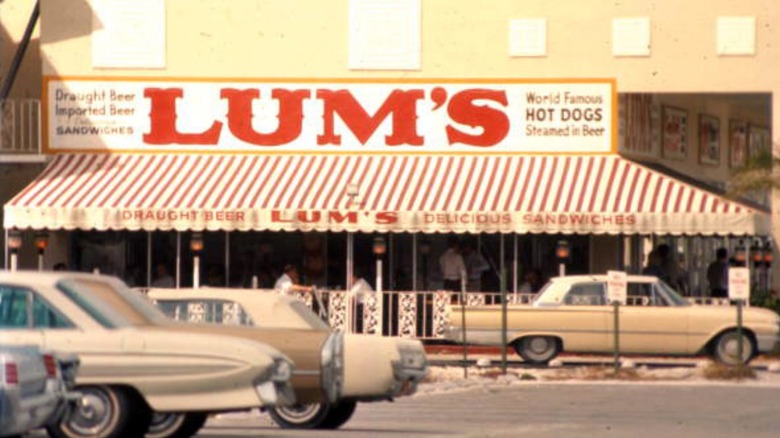Whatever Happened To Lum's Restaurant?
There are so many restaurants that were once popular and full of hungry bellies every day. Restaurants like Sambo's, a pancake house, Chi-Chi's, a casual Mexican dining experience and even the original Mcdonald's aren't around anymore, per Delish. Instead, it was turned into an unofficial museum in 1971!
The historical value and memories places like these offer make people wonder, whatever happened to them? Well, one that stands out, in particular, is Lum's restaurant. This unique hot dog joint was known for steaming its dogs in beer – it was kid-friendly; don't worry!
In 1956, it was welcomed in Miami Beach, per Florida Backroads Travel. Founded by the Perlman family, Lum's became popular among college students, says The South Florida Sun-Sentinel. It increasingly gained popularity over the years, and by 1972, there were over 400 locations in the U.S., Puerto Rico, and Europe. In fact, as it became a household name, Lum's even purchased Caesars Palace, a popular and large hotel and casino in Las Vegas. How could a place that was doing so well, come to an end?
How the sausage was unmade
Sadly, all good things must come to an end, and this proved true with Lum's restaurant. Even with its incredible success, investors and switching ownership ended up being the end of the hot dog joint as fans knew it. The chairman of Kentucky Fried Chicken (KFC) bought the company in the early 1970s when it was at its peak (via Florida Backroads Travel).
Things continued to go downhill from there, with Lum's then being sold to a Swiss holding company in 1978. Soon after, the Swiss firm filed for bankruptcy. This led to Lum's locations shutting down around the world and filing for bankruptcy.
In the end, Lum's had reached 500 restaurants across the U.S. The last one, located, in Davie, Florida, didn't close into 2009. The location had been open for 32 years and was filled with memorabilia. It eventually was sold at an auction, and the 12 people that worked there had to say goodbye. Some of the workers had been there during its entire 30-plus-year run, says The South Florida Sun-Sentinel.

